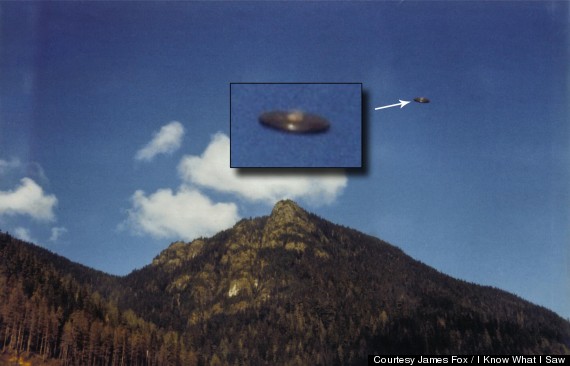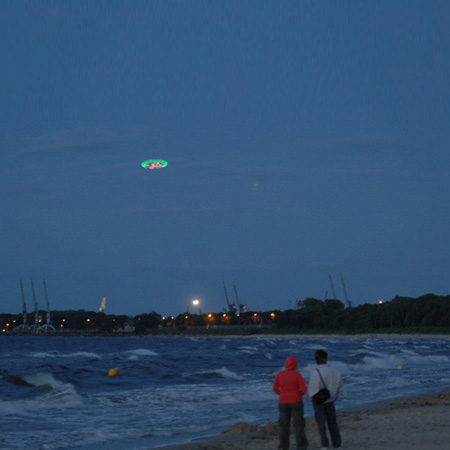UFO (Unidentified Flying Object)

An unidentified flying object, or UFO, in its most general definition, is any apparent anomaly in the sky that is not identifiable as a known object or phenomenon. Such anomalies may later be identified, but depending on the evidence or lack of evidence, such an identification may not be possible generally leaving the anomaly unexplained. While stories of unexplained apparitions have been told since antiquity, the term "UFO" (or "UFOB") was officially created in 1953 by the United States Air Force (USAF) to serve as a catch-all for all such reports. It was stated that a "UFOB" was "any airborne object which by performance, aerodynamic characteristics, or unusual features, does not conform to any presently known aircraft or missile type, or which cannot be positively identified as a familiar object." As originally defined, the term was restricted to those fraction of cases which remained unidentified after investigation, with USAF interest being for potential national security reasons and/or "technical aspects." (See Air Force Regulation 200-2.) During the late 1940s and through the 1950s, UFOs were often referred to popularly as "flying saucers" or "flying discs". The term UFO became more widespread during the 1950s, at first in technical literature, but later in popular use. UFOs garnered considerable interest during the Cold War, an era associated with a heightened concern for national security.
Various studies have concluded that the phenomenon does not represent a threat to national security nor does it contain anything worthy of scientific pursuit (e.g., 1953CIA Robertson Panel, USAF Project Blue Book, Condon Committee). Culturally, the phenomenon has often been associated with extraterrestrial life or government-relatedconspiracy theories, and has become a popular theme in fiction.
Studies
Studies have established that the majority of UFO observations are misidentified conventional objects or natural phenomena—most commonly aircraft, balloons, noctilucent clouds, nacreous clouds, or astronomical objects such as meteors or bright planets with a small percentage even being hoaxes. Between 5% and 20% of reported sightings are not explained, and therefore can be classified as unidentified in the strictest sense. While proponents of the extraterrestrial hypothesis (ETH) suggest that these unexplained reports are of alien spacecraft, the null hypothesis cannot be excluded that these reports are simply other more prosaic phenomena that cannot be identified due to lack of complete information or due to the necessary subjectivity of the reports.
While UFOs have been the subject of extensive investigation by various governments and although a few scientists have supported the extraterrestrial hypothesis, almost no scientific papers about UFOs have been published in peer-reviewed journals. There was, in the past, some debate in the scientific community about whether any scientific investigation into UFO sightings is warranted with the general conclusion being that the phenomena was not worthy of serious investigation beyond a cultural artifact.
The picture of UFO at the different time



Data and picture from
No comments:
Post a Comment